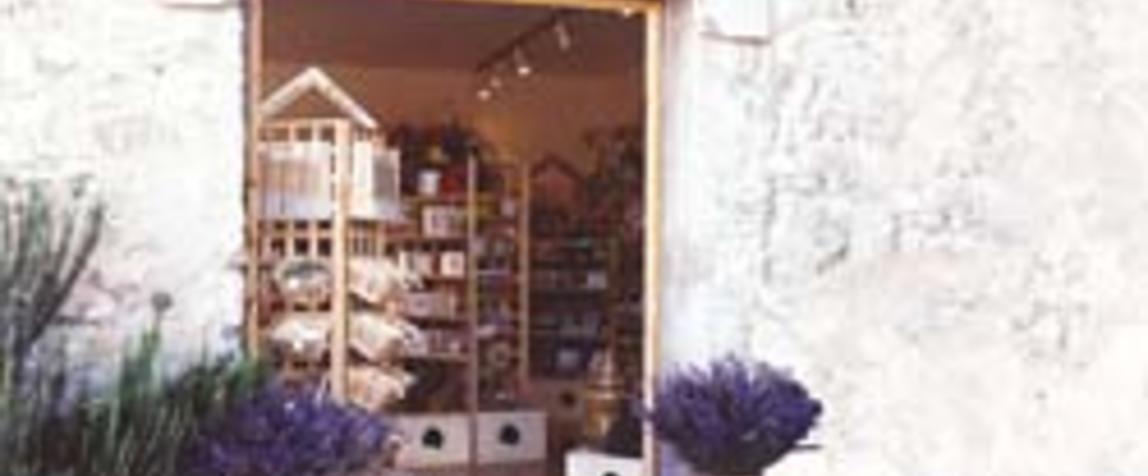Sunshine, products of our land, and a love for nature are the essence of Provence. It is this essence that I want to share with the world, and which inspired me to create L’Occitane,” reveals brand founder Olivier Baussan. And so begins the story. Begun in 1976, Baussan’s desire to maintain French perfumery traditions coupled with his respect for nature helped him envision the future of L’Occitane. Capturing Provence’s most subtle fragrances and blending them with natural ingredients, Baussan developed L’Occitane’s very first products based on essential oils extracted from local plants.
With a love of plants, Baussan became involved in creating his own essential oils while studying literacy. He acquired a still where he tinkered around making essential oils. Later, Baussan started using the essential oils to make shower gels, shampoos and soaps. Using an old soap factory, 1976 saw Baussan reviving the traditional art of Marseille soap-making. He began selling the soaps in markets in the South of France where they quickly became popular. A year later, L’Occitane reserved its first harvest of lavender - the iconic symbol of Provence.

While exploring the world for new ingredients and traditional techniques, Baussan learned about the women who produce shea butter in Burkina Faso, Africa in 1980. Olivier was at an airport and he ran into somebody that had just been to Burkina Faso. They said to him ‘you’ve got to go over to Burkina Faso and meet these women. Their skin is absolutely amazing – they’re using shea butter’. So he changed his flight plans and he went to Burkina Faso,” says L’Occitane training director Lucy Primrose. Here, he discovered the many benefits of shea butter, which were later incorporated in L’Occitane products. L’Occitane was one of the first companies to use shea butter in cosmetics, with the Shea Butter Hand Cream now one of the brand’s best sellers with one sold every three seconds around the world.
The next decade saw the brand move from strength to strength. In 1981, the first L’Occitane factory and store opened in Volx, Provence. In 1990, L’Occitane became a fragrance merchant, buying a barge to distribute its products in order to spread the aromas of the gardens of Provence. Two years later saw the brand open its first boutique in Paris on Rue Vavin. But it wasn’t until 1994 that things began to really escalate for the brand. The employment of Reinold Geiger to the brand saw L’Occitane being launched outside of France. Prior to this, L’Occitane was more of a wholesale business, whereas Reinold Geiger decided to position the company as a premium brand and this is where we started opening up boutiques around the world,” explains Primrose. The brand’s global expansion began with a boutique opening up in New York City and Hong Kong in 1996 and Japan in 1997.

One thing that stands out with L’Occitane is its commitment to supporting the visually impaired. Part of this commitment saw L’Occitane make the landmark decision to start putting braille on its packaging in 1997 after Baussan witnessed a blind man in a lift feeling for all the numbers. Baussan decided to use Braille on the packaging for two reasons. One, to build awareness of the visually impaired and the second reason is so that the visually impaired can use our products as well in confidence,” says Primrose. Braille remains on the brand’s packaging to this day.
The year 2001 saw the brand take another huge step forward with the launch of L’Occitane’s first range using the immortelle essential oil. This launch was the catalyst to see the brand’s focus shift from soaps and home products to skincare. The immortelle essential oil was discovered by Baussan while out driving. After seeing a little sign on the road saying immortelle”, Baussan drove up the long winding road where he met Al Brett, who was distilling the immortelle essential oil. After taking a sample, Baussan fell in love with the oil. The brand now has 50 hectares of organic immortelle essential oil growing on its own farm with its own farmers. With amazing abilities to increase collagen production by up to six times and regenerate the skin, the immortelle line is the brand’s biggest loyalty building range. The Immortelle Divine Cream is L’Occitane’s biggest selling product.

Next up for the brand was the launch of the L’Occitane Foundation on October 6, 2006. The foundation has an average budget of 1, 000, 000 euros to finance around 15 projects a year to help support the blind and the economic emancipation of women. Since launching, 500,000 people have benefited from eye care thanks to L’Occitane, while 9700 women have benefited from the foundation’s initiatives to promote women’s entrepreneurship in Burkina Faso. With only one in five women in Burkina Faso knowing how to read and write, the foundation works to teach the women these skills. The L’Occitane Foundation aims to help improve the women’s literacy, develop further their income generating activities through training and micro-credits, and support the development of small businesses.
Since its creation, L’Occitane has nurtured simple values: authenticity, respect, sensorality and continuous improvement. These values have resonated strongly with the Australian consumer who have embraced the ethics and traceability of the brand. Having just opened its 36th boutique in Australia, L’Occitane has been well received by consumers Down Under. With over 2000 stores all over the world, L’Occitane is now a major power player in the beauty industry. Having received awards from the Anti-Ageing Beauty Bible, Beauty 100 Chatelaine and marie claire magazine, this is one brand that’s future is set to be as rich as its past. We look forward to discovering the next chapter in the L’Occitane story as it unfolds.

